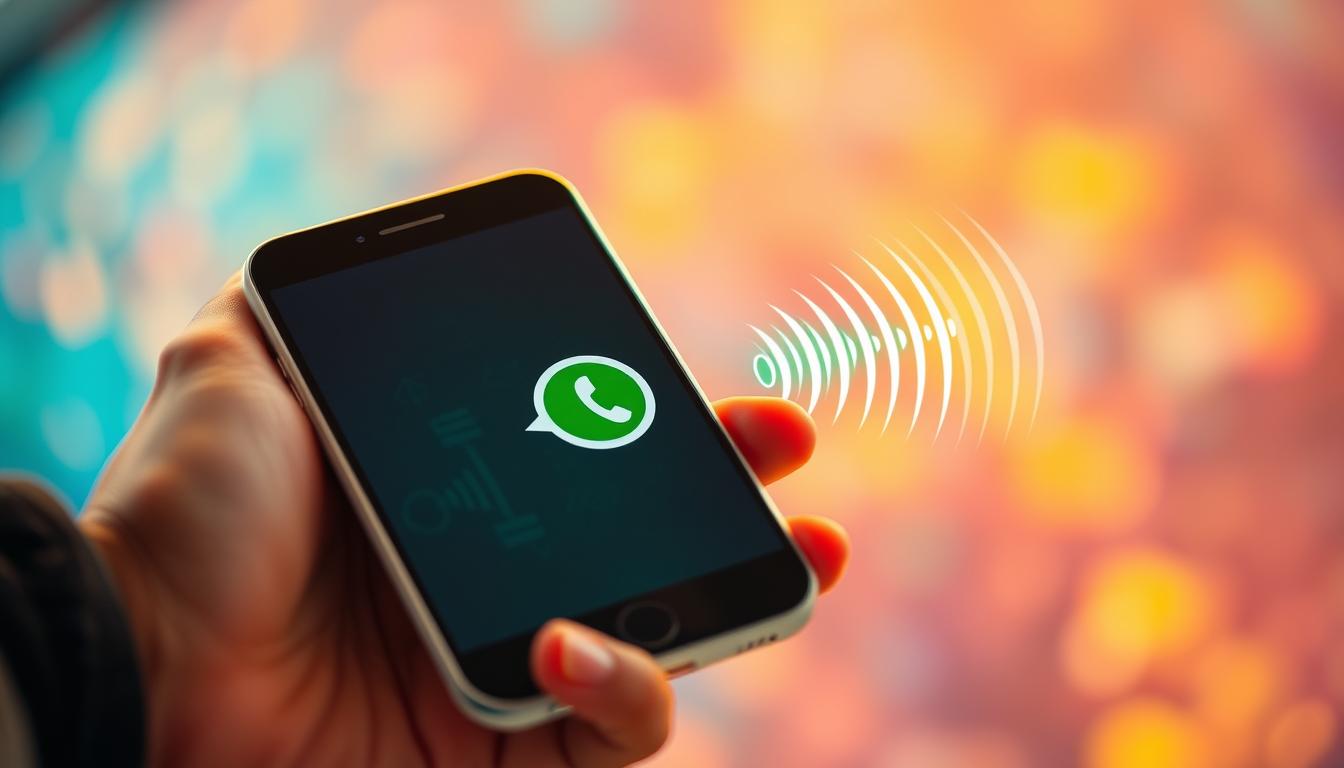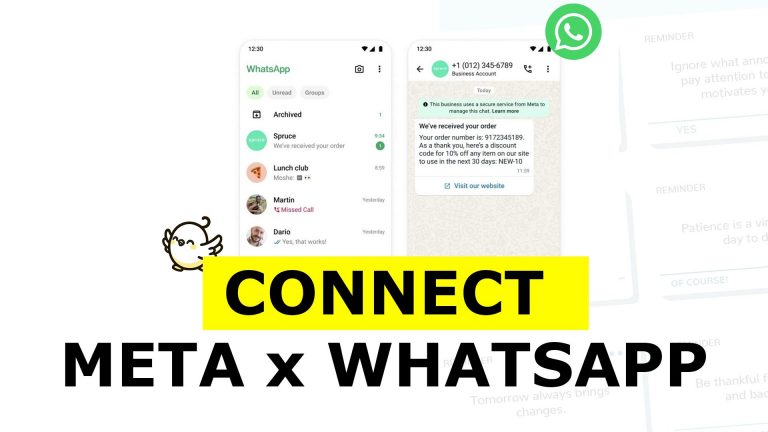Did you know that 7 billion voice messages are sent every day on WhatsApp? This amazing number shows how popular vocal mailing is getting. Young people, aged 17-24, especially enjoy using WhatsApp for this. They prefer it to older ways of talking, like emails or phone calls. Vocal mails let you hear someone’s voice. This way, you can catch the feelings and tones that texts miss out on.
Vocal mailing means sending voice messages, mostly through apps like WhatsApp. It helps you connect on a personal level. By sending voice messages, you can share true feelings. This makes chats more real. Not just for friends and family, but businesses are seeing its value too. Using voice notes can draw customers in. This makes for better sales and clearer talks.
WhatsApp is always coming up with new stuff, like Voice Message Transcripts. This neat feature lets people turn voice messages into text. It’s great for when it’s hard to hear the message. With plans to add more languages, WhatsApp really cares about making voice chats better. This shows how key voice messaging is today.
Introduction to Vocal Mailing
Vocal mailing lets users send short audio recordings instead of texts. It’s popular on apps like WhatsApp. It makes chatting feel more personal. People who don’t like phone calls or video chats prefer sending voice notes. These messages show emotions and tone that texts miss.
WhatsApp voice messages are great for business owners. They can share detailed messages with clients. This way, they build stronger connections. Studies show that voice notes boost responses and engagement from clients.
Efficient chat is becoming more important. Vocal mailing is a solution. The ability to turn messages into text for CRM systems shows its value. It’s key for both personal and business talks. Vocal mailing is useful and emotional for messaging today.
Understanding Voice Messaging
Voice messaging has truly changed how we talk to each other. Now, users can leave WhatsApp voice recordings. These can be heard and replied to later. This way, we can share our feelings better than through text. Texts can be unclear about our tone.
Listening to a voice message helps us understand the speaker’s true intent. It makes the message clearer. Voice messaging lets us add a personal touch, which texts lack. Misinterpretations are common with texts. But, voice tones clear up these misunderstandings.
In my work life, using voice messages with clients has built stronger bonds. Trust grows this way. Many find voice messages more personal and appealing. Facts show that 62 percent of Americans send voice messages. About 30 percent use voice messaging daily or weekly.
Young people, especially, like voice messaging. For example, 43 percent of those aged 18 to 29 use it a lot. This shows how Millennials and Gen Z prefer voice messaging. They choose it over traditional texting.
Businesses find voice messaging helpful too. They use it for talking to customers in a personal way. This approach has improved sales conversations. Connecting through voice messages makes customers more engaged. When businesses ask for feedback with voice, it strengthens this interaction.
Look at how companies use voice messaging by clicking here.
To wrap up, voice messaging gives a personal touch to our chats. It helps businesspeople create deeper connections. This leads to better and more engaging conversations.
The Rise of Voice Messaging Usage
Voice messaging is becoming more popular across different age groups. It’s changing our ways of staying in touch. Now, it’s a big part of social media and chat apps, leading us to use our voices more.
This change shows we crave deeper connections. The increase in WhatsApp messaging trends is a clear example.
Statistics on Voice Message Adoption
Voice messaging is on the rise, according to the data. A study found that 62% of Americans have tried it at least once. WhatsApp users are especially active, sending over 7 billion voice messages every day.
- 30% of individuals communicate via voice message at least weekly.
- 43% of people aged 18 to 29 use voice messaging at least once a week.
- Voice messaging became popular during the COVID-19 pandemic, reflecting a shift in social connections.
- Auto transcription features are being introduced to assist users who may not be able to listen immediately.
Demographics of Voice Messaging Users
Young adults are leading in using voice messages, seeking instant and genuine interactions. About 43% of those between 18 and 29 years old use this feature weekly. They find it more personal than text messages.
Voice messages are interesting to a wide audience, reminding us of old answering machines. Even older generations find them appealing.
In exploring voice messaging demographics, we see an interesting trend. Users often form opinions about others based on their voice. Voices can sometimes lead to biases, which affects how we perceive someone.
This relationship between voice and personality adds depth to how voice messaging is used. If you’re interested in WhatsApp for business, this link offers great insights: WhatsApp marketing strategies.
WhatsApp Vocal Mailing Explained
WhatsApp has changed how we talk with voice messages. It makes sending voice messages easy. By pressing a button, you can record and send a message quickly. This easy way of communicating fits well with how we interact today.
How WhatsApp Handles Vocal Messaging
WhatsApp is known for efficiently managing voice messages. Every day, users send 7 billion voice notes. These messages let people share emotions and feelings, making chats lively. Some even listen to messages faster to save time, showing how flexible the tool is.
Benefits of WhatsApp Audio Messaging
The perks of WhatsApp audio messaging are many. Voice notes let you share your feelings and personality more than texts. For example, a friend can send updates via voice, sharing emotions that texts can’t. This adds a personal touch and makes talking more real and fun.
WhatsApp is also trying out voice message transcripts to make it easier for everyone to use, keeping it secure. You can turn this feature on or off, making it customizable. This shows WhatsApp’s focus on improving and making chatting enjoyable for all.
- Increased emotional expression.
- Improved personalization of conversations.
- Flexibility in communication style.
- Enhanced user engagement.
WhatsApp’s voice messaging is getting better, helping people connect more easily. It’s making sending voice notes on WhatsApp even more fun and effective.
Benefits of Vocal Mailing
Vocal mailing brings many benefits that make communication better. It moves us from text to voice, improving engagement and understanding. Voice messages create meaningful connections and enrich voice communication.
The Personal Touch of Voice Communication
Vocal mailing shines by letting us share emotions and a personal touch. Unlike texts, voice messages let listeners catch every nuance. This emotional depth strengthens bonds. Hearing a voice builds intimacy in ways texts can’t.
- Builds meaningful connections
- Enhances emotional understanding
- Encourages real-time interactions
Reducing Miscommunication
Reducing miscommunication is crucial. Voice messages make complex feelings and messages clear, a big plus for businesses. Texts can confuse, but vocal cues clarify. This clarity is key in keeping professional ties strong and ensuring messages are rightly understood.
- Minimizes confusion
- Improves message clarity
- Facilitates emotional expression
How to Send Voice Notes on WhatsApp
Sending voice notes on WhatsApp is simple and direct. First, open a chat in the app and find the microphone icon in the text input area. Press and hold this icon to start recording your message. Once done, just let go of the icon to send your voice note. This method helps you share feelings and nuances clearly.
Before you send them, you can hear your recordings. This checks that your message sounds just right, avoiding misunderstands. Furthermore, WhatsApp doesn’t limit how long your voice messages can be. This lets users talk as much as they want.
Using voice notes isn’t just for the phone app; it’s possible on desktop too. Just set up a microphone, and you can send messages from your browser. Mistakenly sent a message? Press it for a while to delete for everyone or just you. Also, you can keep messages by emailing them in OGG format or using iCloud Backup for iOS.
For Android users, saving voice notes is straightforward. Go to the app’s media folder in internal storage. Or, use screen recording for important messages. This makes sure everyone can make the most out of WhatsApp’s voice messaging.
Challenges of Using Voice Messages
Voice messaging is now more popular, with roughly 200 million voice notes sent via WhatsApp every month. But there are challenges to think about. Knowing when it’s wrong to send voice notes helps us talk better in many situations.
Situational Limitations
Sometimes, voice notes aren’t the right choice. They can be hard to send or hear in places like meetings or quiet areas. If the person can’t listen in silence, it can be bothersome. Think about these examples:
- In busy spots where noise makes them hard to hear.
- At formal gatherings where they could interrupt.
- When fast answers are better, since voice notes take longer to listen to than texts to read.
It’s smart to think about where and when to use voice notes. This avoids wasted time and misunderstands.
Perceptual Biases with Voice
How we feel about voice notes can change based on the speaker’s voice. For instance, Silke Paulmann from Essex University says vocal clues tell us a lot about feelings and thoughts. But voice notes can’t show all the social signals that face-to-face talks can. This might lead to wrong ideas. Keep in mind:
- High voices might seem less serious, affecting how we view the message.
- People have mixed feelings about voice messages; some find them annoying.
- They can feel strange to people used to older ways of communicating.
Understanding these biases helps us communicate better, both with friends and at work.
The Impact on Communication Styles
The digital world is changing how we talk to each other. Now, we use voice messages, adding something new to chats. This change makes our talks feel real but also shakes up old texting habits.
Studies show Millennials like to text or use apps more than leaving a voicemail. This shows the younger crowd favors texting, while older generations might stick to voice mail. Understanding who prefers what is key to talking clearly.
- Voice messages can provide context missed in text.
- Checking missed calls remains common, creating the need for voice mail.
- Successful communication across different age groups requires stepping out of comfort zones.
Communicating well helps avoid confusion and builds strong connections. Research by Wello and Novia points out this fact. Students use different apps like WhatsApp for schoolwork, making group chats handy. But, sometimes these chats can be rude, especially between students and teachers.
In the end, knowing when to text or leave a voice message matters. By understanding these changes, we can talk better with everyone. This opens up pathways for deeper connections.
International Trends in Voice Messaging
Voice messaging is becoming very popular around the world. In places like Latin America and West Africa, more people are using voice messages. They prefer it because it suits their culture and solves language problems. Voice messages let people share feelings and details that texts can miss.
WhatsApp is at the forefront of this move. It’s introducing new features to meet the rising demand for voice messages. The voice message transcripts feature is making the platform more accessible and private. Users find this option under Settings > Chats > Voice Message Transcripts. WhatsApp plans to support more languages soon, aiming for wider inclusivity.
- The drafts feature on WhatsApp now allows users to save unsent messages as drafts, enhancing user experience.
- A bold green “Draft” label assists in identifying these unsent messages quickly.
- Recent updates, including a built-in address book, help with better organization of conversations.
Nowadays, about 1 in 4 adults in the U.S. have smart speakers. This shows people are getting more comfortable with voice tech. They are expected to spend $19 billion on products with voice control. This suggests a big interest in voice tech. The fact that 55% to 60% of mobile users like voice notifications shows voice messaging works well.
Enhancing eCommerce with Vocal Mailing
Businesses are always looking for new ways to connect with their customers. Vocal mailing is a great method to improve eCommerce communication. It lets companies use voice messages in their customer chats. This is really useful when you integrate WhatsApp with Shopify. It allows businesses to talk to customers more personally.
Coco App: Bridging WhatsApp and Shopify
The Coco app links WhatsApp and Shopify for businesses. With WhatsApp sending over 100 billion messages daily, the chance to reach customers is huge. People spend about 17 hours a month on WhatsApp, showing they love to use it. This means voice messages can help make shopping online feel friendly and engaging.
How Vocal Mailing Supports Business Communication
Vocal mailing helps businesses talk to customers in a special way. Instead of just texts, vocal notes can provide updates and answers personally. This makes customers happier and more loyal. Using the Coco app, businesses can make their customer service better. Features like list messages and quick reply buttons on WhatsApp help get more sales. This improves the shopping experience too.
Vocal mailing is becoming very important in eCommerce. More companies are using voice chats to talk to customers. Big brands like Nike and Domino’s are already doing this with WhatsApp. With tools like this multichannel marketing platform, eCommerce sites can really change how they engage with customers. It’s a big step forward for online shopping.
Voice Messages vs. Traditional Texting
Voice messaging and texting have their unique benefits. Many millennials text to avoid phone call anxiety. This can lead to misunderstandings since texts can’t show emotions well. Sometimes, short replies seem unfriendly, causing social strain. On the other hand, voice messages bring out the speaker’s emotions, making chats warmer and more genuine.
During the pandemic, voice messages became more popular on apps like WhatsApp. In fact, 62% of Americans have sent a voice message. This method is especially popular among the young. Voice messages let people express emotions through their voice. This makes chats feel closer and more real, enhancing relationships.
Voice messages make conversations flow more naturally. They let people share feelings better. Things like pauses or sighs show what the speaker really feels. This makes chats more lively. Experts believe voice memos encourage real, in-the-moment talks. They offer a break from overly edited texts or emoji-filled messages.
Using voice memos and texts together can improve how we talk to each other. Keeping messages short, knowing when to use them, and considering what the receiver prefers are key. This approach builds stronger connections, whether with friends or colleagues. The debate between voice messaging and texting shows a shift to deeper, more meaningful talks.
Future of Vocal Mailing in Messaging Apps
Voice messaging is becoming more exciting as digital communication grows. Platforms like WhatsApp are adding cool features. One such feature is voice message transcription. It works on both Android and iOS devices. Users can easily find the ‘Voice message transcripts’ option in WhatsApp’s settings.
This feature supports many languages like English, Portuguese, Spanish, and Russian. To use it, you just turn it on and choose your language. This makes talking to friends in other languages easy. Plus, everything is safe because of end-to-end encryption. This means only the person getting your message can see it.
Transcription is great but it’s not perfect. Sometimes, background noise or accents can make it less accurate. But, SMS is still very important. It’s especially true in places without good internet. This shows we need both old and new ways to talk to each other.
Future updates like Rich Communication Services (RCS) will make texting even better. Messaging apps will do more, like handling money, business accounts, and virtual reality chats. With AI, we might even get instant translations and understand how someone feels when they talk. So, we’re looking at a big change in how we use voice messages.
Conclusion
Vocal mailing, like that on WhatsApp, is very important in today’s world. It does more than just connect people; it lets them share real emotions. This way, voice messages bring us closer, whether we’re talking to friends or colleagues.
Using voice messages on WhatsApp has big benefits. It saves time for busy people and feels more personal than text messages. Plus, it’s great for those who find writing hard. This makes chatting easy and fun for everyone.
But vocal mailing doesn’t come without challenges. Concerns about privacy and unwanted background noise are being tackled. Despite these hurdles, voice messaging is changing our conversations for the better. It makes keeping in touch an experience that brings us closer.




